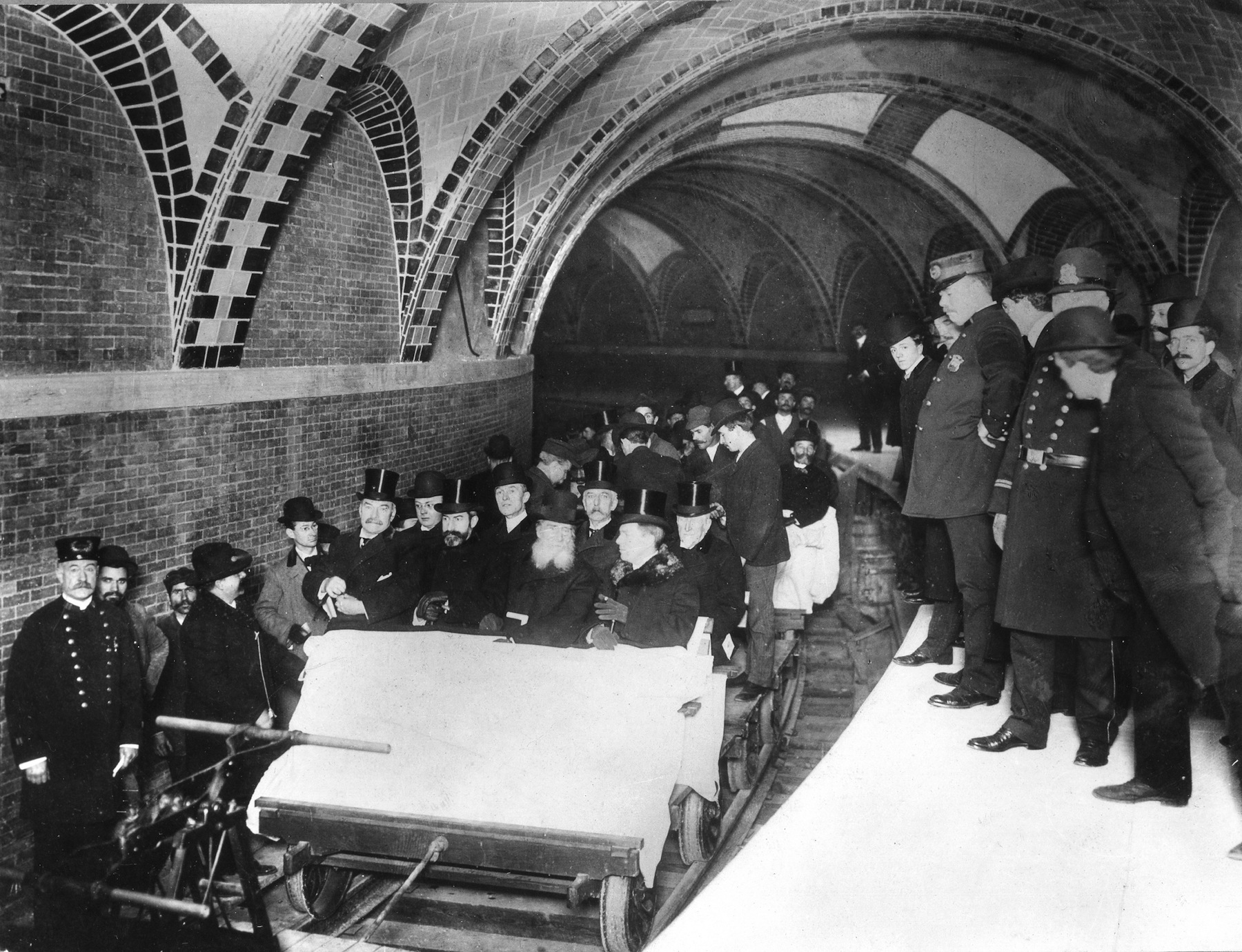
Long before New Yorkers started taking their pants off to liven things up on the subway, the ride was a novelty even with everyone fully-clothed.
On this day 110 years ago — Oct. 27, 1904 — 150,000 people rode the subway when it opened to the public for the first time, regarding the new form of public transit more as a circus act than as part of the drudgery of daily life. The first subway line, which ran from City Hall to 145th Street and Broadway, opened to “the tooting of whistles and the firing of salutes,” according to the New York Times’ report of the day, which noted the awe of those waiting in line for their turn to ride in the tunnels:
The general public would not be admitted until 7 o’clock, and its curiosity was vastly whetted all the afternoon by the unfamiliar appearance of crowds emerging from the earth.
Of this sight New York seemed never to tire, and no matter how often it was seen there was always the shock of the unaccustomed about it. All the afternoon the crowds hung around the curious-looking little stations, waiting for heads and shoulders to appear at their feet and grow into bodies. Much as the Subway has been talked about, New York was not prepared for this scene and did not seem able to grow used to it.
Ultimately, they did manage to grow used to it, and a modern level of malaise quickly took the place of curiosity and celebration. By 1932, when TIME reported on a proposal to unify the three different subway systems then operating independently, it referred to what this would mean for the “subway sardines” who read newspapers over their fellow passengers’ shoulders on the “humid, jam-packed” subway cars.
While the New York City subway was not the first rapid transit system to be built (London, Paris, and Berlin — as well as Chicago and Boston — had already developed the capacity to shuttle commuters like sardines) it made life both simpler and more annoying for the 3.25 million people who, by 1948, would twice daily “descend into the maelstrom of the subways with the haunted resignation of lemmings,” according to TIME, “there to die the small death of the rush hour.”
If there was still some circus-like curiosity to be found on the trains, the 1948 piece snarked, it was that “the subway rider is a sullen example of the incredible compressibility of the human frame.”
And if nothing else, subways had always been cheap. Per TIME: “They offered the longest uninterrupted ride in the world (if anyone could stand it) for a nickel — 22.65 miles from the remote reaches of The Bronx to even remoter reaches of Brooklyn.” That was, until later that year. If there was anything worse than being packed together like sweaty sardines, it was having to pay twice as much for the privilege, TIME concluded. But in the summer of 1948, it was announced, “New Yorkers would have to pay a dime to ride their dirty old subways.”
Read TIME’s 1948 take on the subway system, here in the archives: The Nickel’s Last Ride
More Must-Reads from TIME
- Cybersecurity Experts Are Sounding the Alarm on DOGE
- Meet the 2025 Women of the Year
- The Harsh Truth About Disability Inclusion
- Why Do More Young Adults Have Cancer?
- Colman Domingo Leads With Radical Love
- How to Get Better at Doing Things Alone
- Michelle Zauner Stares Down the Darkness
Contact us at letters@time.com